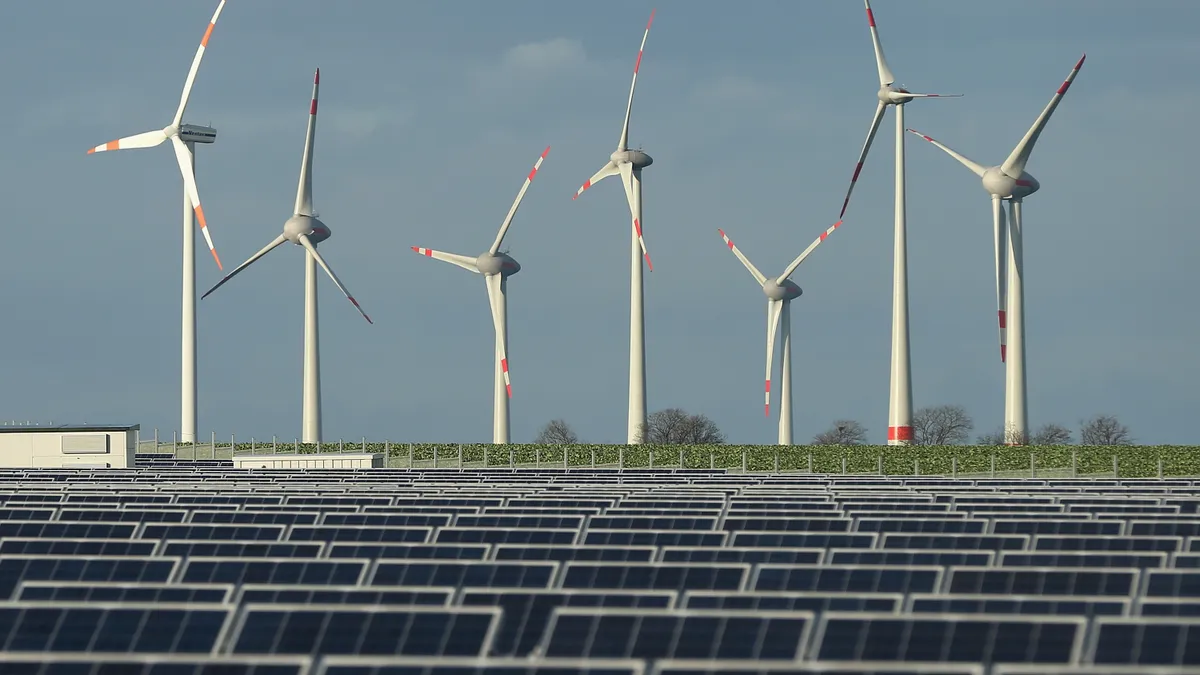Dive Brief:
- Brookfield Asset Management announced Monday it had secured $10 billion for its latest energy transition fund in its first close. The firm said it will continue to raise money for the fund until Q3 of this year.
- The clean energy investor — which has over $850 billion in assets under management, out of which $102 billion is from renewable power and climate transition projects — said the Brookfield Global Transition Fund, or BGTF II, is a successor to its first transition fund, BGTF I, that raised $15 billion in 2022. However, Brookfield said BGTF II is on track to exceed its predecessor’s fund size.
- The fund will invest in the expansion of clean energy, the development of sustainable solutions and the transformation of companies operating in carbon-intensive sectors to more sustainable business models, the company said. BGTF II’s seed portfolio currently includes an onshore renewables developer in the United Kingdom and a solar development partnership in India.
Dive Insight:
Brookfield said BGTF II will build on its predecessor’s investing strategy and focus on investments that accelerate the pathway to a net-zero economy. BGTF I has backed a range of projects across renewable power, carbon capture and storage, renewable natural gas and nuclear-power services — all of which are managed according to science-based sector pathways for net-zero, according to the firm.
The second Brookfield Global Transition Fund will be managed by Mark Carney, Brookfield’s chair and head of transition investing, and Connor Teskey, CEO of Brookfield Renewable Power and Transition.
Teskey said the funding points to the “growing appetite” among global investors to capitalize on clean energy and green infrastructure projects. He also said the space has witnessed the evolution of new trends such as supplying reliable, clean power to the surging data and technology sector, building new industrial supply chains and scaling the technologies needed for industrial decarbonization.
“Corporate demand for decarbonization technologies is now the primary driver of transition investment, delivering significant economic value as well as meaningful environmental benefits,” Teskey said in the press release.
Brookfield’s renewable power and sustainability platform, Brookfield Renewable Partners, also comprises a portfolio of clean energy projects including hydroelectric, wind, utility-scale solar and storage facilities in North America, South America, Europe and Asia. The firm said its sustainable solutions assets include investments in nuclear power services, carbon capture and storage, renewable natural gas, waste recycling, green ammonia and solar panel manufacturing.
Last year, Brookfield bought a majority stake in Westinghouse Electric Company in a bid to expand its foothold in carbon-free energy technologies and use Westinghouse’s nuclear power services. The purchase was made through BGTF I.
The expansion of Brookfield’s clean energy portfolio taps into a growing trend of investing in green infrastructure and development. BGTF II’s financing follows BlackRock’s January acquisition of Global Infrastructure Partners in a deal valued at around $12.5 billion. The acquisition combines GIP’s energy, transport, water, waste and digital infrastructure focused portfolio with BlackRock’s $50 billion infrastructure platform.
The nation’s largest asset manager cited “a movement toward decarbonization and energy security in many parts of the world” as a reason for the deal.
The financial expansion of the new fund also comes amid a growing demand for clean energy investments. According to recent data from BloombergNEF, investments in the sector jumped by 17% in 2023 compared to 2022, hitting around $1.8 trillion. The research and data services provider said projects in renewable energy, electric vehicles, hydrogen and carbon capture all drove investment growth year-on-year, and investments in the clean energy supply chain could rise to $259 billion by 2025.
















